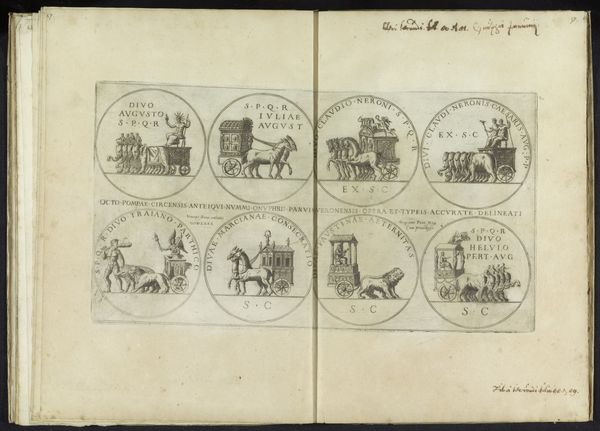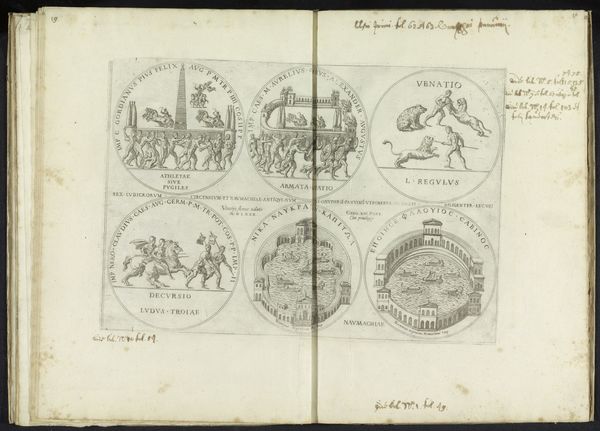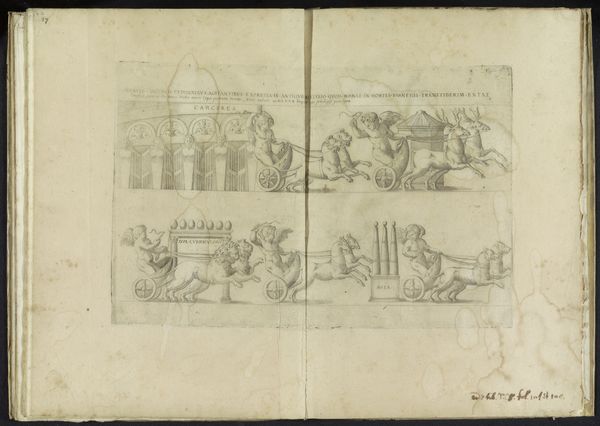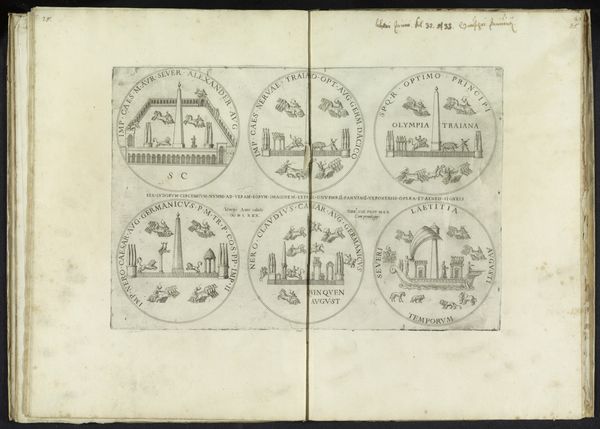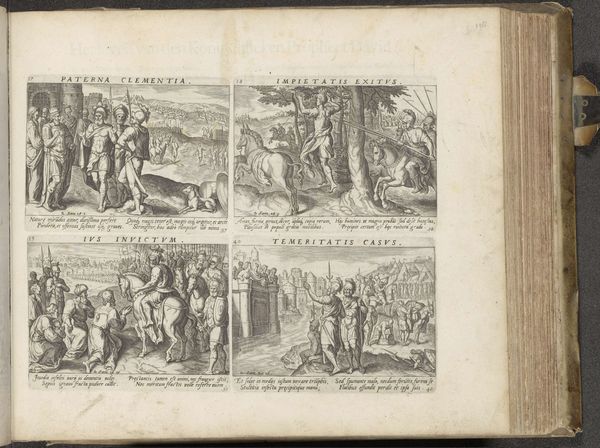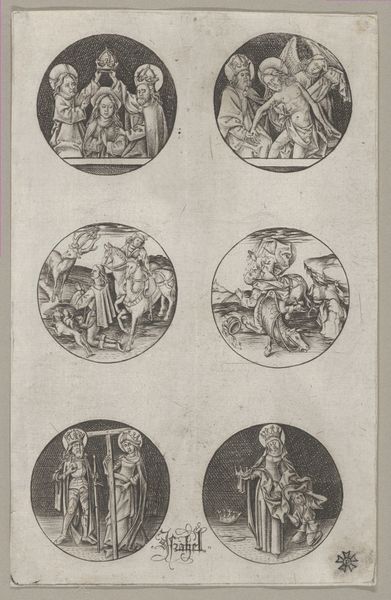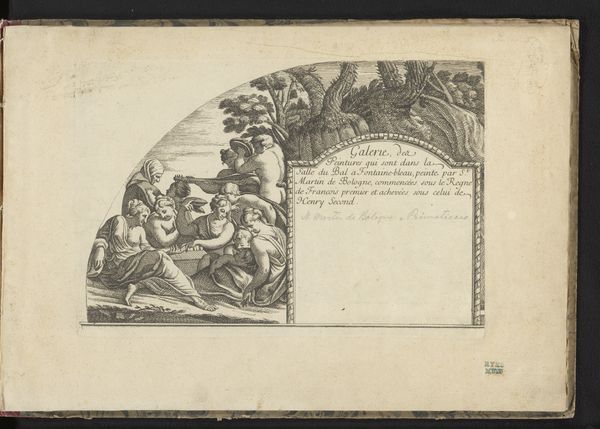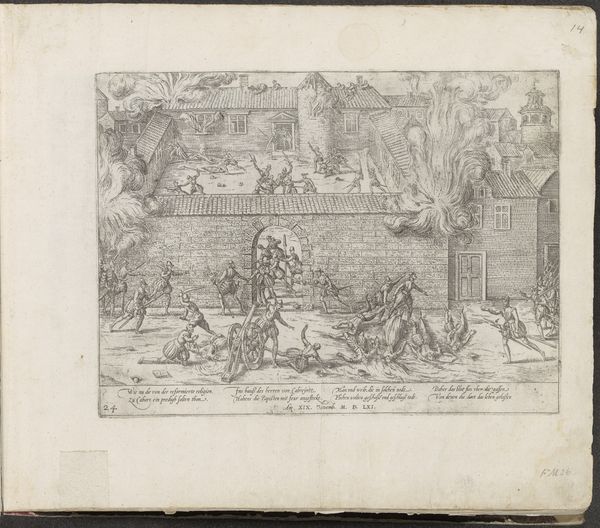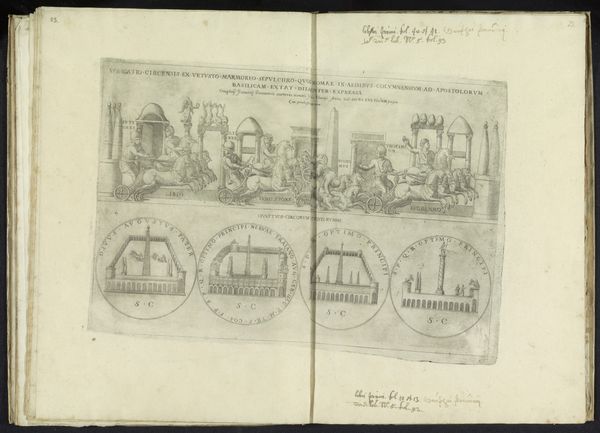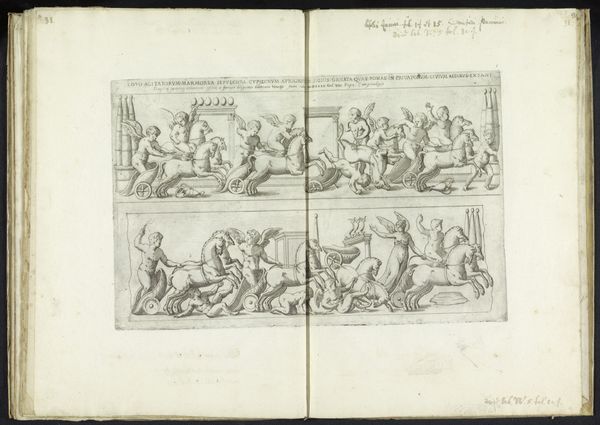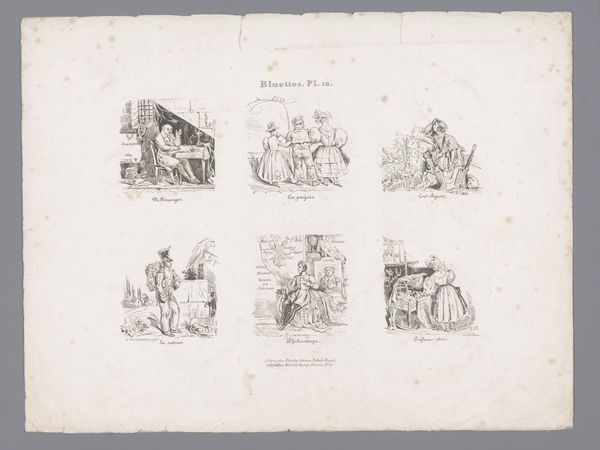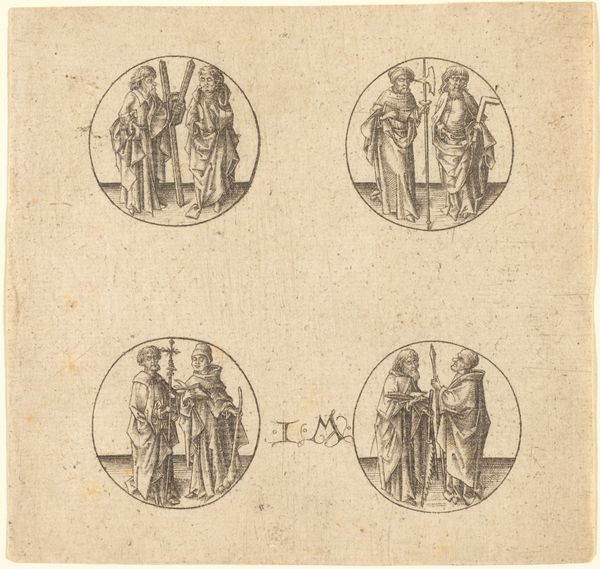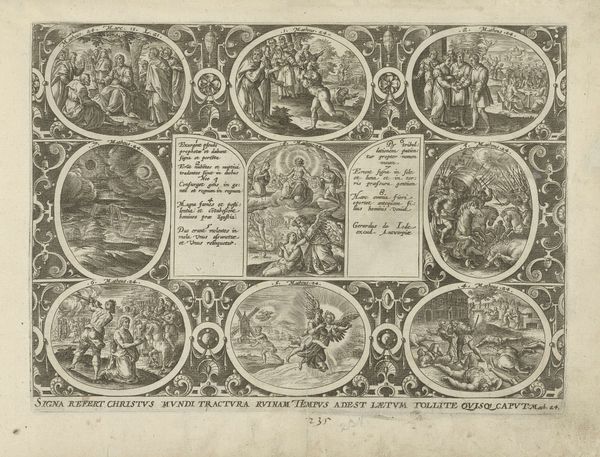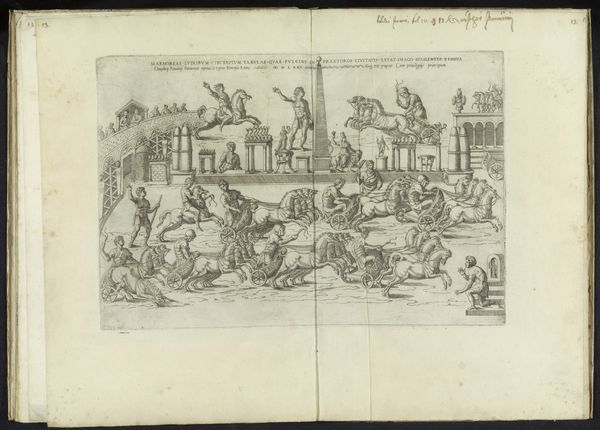
drawing, print, ink, engraving
#
drawing
# print
#
11_renaissance
#
ink
#
geometric
#
ancient-mediterranean
#
history-painting
#
coin
#
engraving
#
miniature
Dimensions: height 253 mm, width 380 mm
Copyright: Rijks Museum: Open Domain
Curator: Let’s turn our attention now to this fascinating sheet of sketches from the late 16th century, attributed to Onofrio Panvinio, titled "Acht penningen met wagenmenners," which translates to "Eight Pennies with Charioteers." Editor: My immediate impression is how meticulous these tiny engravings are. The precision is striking. They feel almost like precious, miniature worlds, especially those scenes with chariots. Curator: Indeed. Executed in ink, these drawings imitate ancient Roman coins, a common practice among Renaissance scholars trying to understand antiquity through material culture. Each one captures the likeness of chariot races, rulers, and mythical creatures, reflecting the period's fascination with Rome's power and aesthetics. The materiality and making process are so meticulous. You can feel the skill involved in creating such minute details through engraving and drawing on such a small scale. Editor: Absolutely. And consider the sociopolitical implications—the visual language deployed in these coins reinforces hierarchical structures, lionizing imperial might and Roman statehood through the display of chariot races that served as important civic spectacles. What can a close analysis of them reveal about status, identity, and power relations in 16th-century Europe? Curator: An astute point. Moreover, examining who had access to such detailed representations also reveals the dissemination of power through accessible imagery. Who was consuming these sketches? Where were they being traded? Understanding these aspects illuminates a crucial layer to our viewing. Editor: The drawing becomes more than just a mere copy; it evolves into a lens that reflects a multifaceted historical landscape. The attention to the original model matters, but the present reading gives it its social and political significance, which we as present observers bring to it. Curator: Ultimately, considering the interplay between artistic skill, production methodology, and sociopolitical environment transforms how we engage with this work. Editor: Exactly. A piece to consider within intersectional dialogues on power, culture, and representation—across the centuries.
Comments
No comments
Be the first to comment and join the conversation on the ultimate creative platform.
